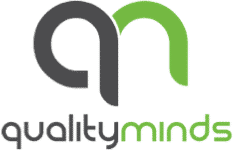At the start of the agile learning coaching process
At the beginning of agile learning coaching with new learners, everything is new for them. How do I set learning goals? Which materials and formats are suitable for my learning goal? How can I motivate myself? How do I deal with obstacles?
Especially during this time, it is important that a few framework conditions are set to relieve the learner in other areas so that he/she can concentrate on the essentials – the actual learning process. A framework that we specify for agile learning coaching with yet inexperienced learning coachees is the sprint length. We have made sure that there is enough time for routines to develop and that the learner can also deal with his or her own learning styles and processes (Gehlen-Baum & Illi, 2019).
Adjustments over time
The longer the learner deals with the agile learning sprint and the associated self-reflection, the more freedom the learner and his/her agile learning coach develop. When learning strategies have been established and the learner understands that a change in his/her behavior usually also results in changes in his/her learning process, you can also start experimenting a little with the length of the sprint. In fact, we would encourage learners to do so, as overall experimentation is a key building block of an agile process. Maybe after a certain time it makes sense for the learner to shorten the learning sprint from three months to just 4 weeks to see what that does to their own motivation or discipline. It should, of course, be noted that learning objectives for 4 weeks cannot be cut as big as for 3 months and that the number of learning objectives should also be examined again.
Shifts to an even more learner-centric mode
Another change that can be helpful for the learner after a certain time is no longer working with a fixed learning sprint but adapting the learning period to the learning goal. This means that the learning sprint is not defined in advance, but the learner proactively reports to his/her agile learning coach upon completion of the learning goal (or via a message on the learning platform). We would recommend this approach for learners who already:
- know how to complete learning goals independently
- have successfully completed some learning objectives
- can independently reflect on changes in their learning process
- can give a realistic estimate of the time required
- can motivate themselves to learn even in difficult phases
- can prioritize learning as such.
Regardless of the sprint length, the learner can take the time he/she deems appropriate for a topic and regularly evaluate whether he/she would like to delve deeper or less deeply – without working under time pressure or having the feeling of being forced to wait a bit. With this approach, it makes sense to keep an eye on how long the learner ultimately needs for a learning objective in the retrospectives, to be able to regularly adjust the strategy here as well. In addition, we recommend that the learning coaches keep in touch with the learner, especially during the changeover phase, to question how the learner is progressing and how the overall procedure fits.


0 Comments